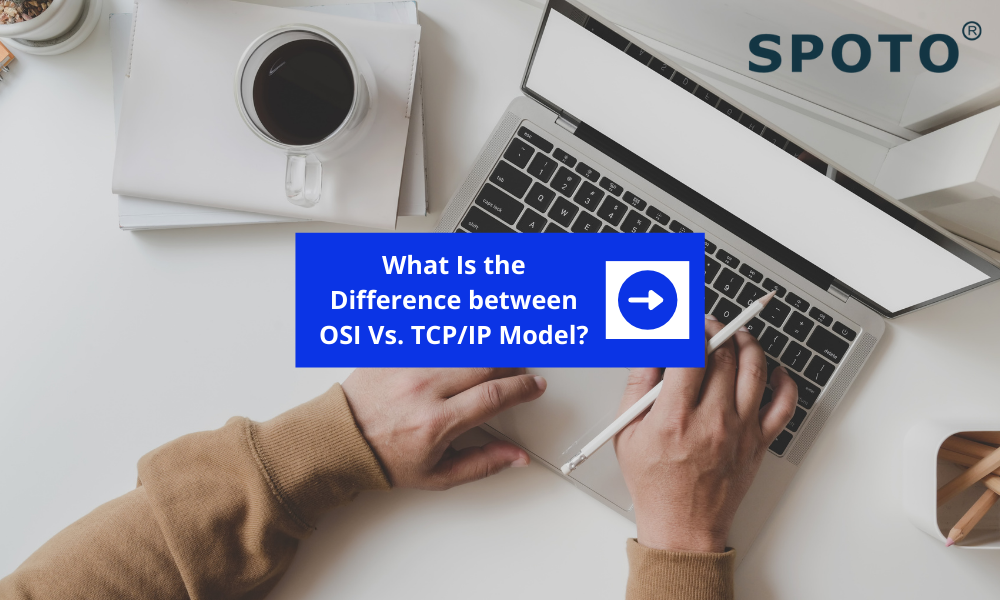OSI Model
The International Organization for Standardization (ISO), an international standard-setting agency, developed the OSI (Open Systems Interconnection) model. It was created as a reference model for outlining the communication system’s functions. The OSI model serves as a foundation for developing and implementing networking standards and devices and describing how network applications running on various computers can communicate through network media.
The OSI model comprises seven layers, each representing a distinct function of data passing over a network. The followings are these layers:
- Application
- Presentation
- Session
- Transport
- Network
- Data Link
- Physical
The layers are typically numbered sequentially, beginning with the Physical layer. It is beneficial to recall these layers, as there will almost definitely be a few questions on them on the CCNA exam. The majority of people memorize the mnemonic. Kindly Do Not Throw Away Sausage Pizza:

Thus, what are the functions of these layers?
They are the most often utilized type by vendors. They enable them to incorporate certain functionality into networking equipment, facilitating interoperability with devices from various suppliers.
The following is a brief description of each of the OSI model’s layers.
• Physical – specifies the method through which bits are transferred from one device to another. It describes how cables, connections, and network interface cards are expected to work and how bits are supposed to be transmitted and received.
• Data Link – A frame is used to encapsulate a packet. A frame is made up of a header and a trailer used to communicate between devices. Typically, a header provides the source and destination MAC addresses. The Frame Check Sequence field in a trailer is used to detect transmission issues. Two sublayers comprise the data link layer:
- Logical Link Control – used to control flow and detect errors.
- Media Access Control – used to address hardware and control the way of access.
• Network – establishes the addressing, routing, and path determination of devices. The term “device (logical) addressing” refers to the process of identifying a host on a network (e.g., by its IP address).
• Transport – decomposes large swaths of data received from top layer protocols. Connects and disconnects two machines. Used for data recovery and flow control.
• Session – specifies how a session between two systems is established and terminated.
• Presentation – establishes the data format. This layer defines compression and encryption.
• Application – this is the layer that is most closely related to the user. It permits the communication of network applications with one another.
It is common to refer to a protocol by its layer number or name. HTTPS, for example, is classified as an application (or Layer 7) protocol. Additionally, network devices are occasionally defined in terms of the OSI layer on which they operate – for example, a Layer 2 switch or a Layer 7 firewall.
The following table summarizes which protocols are located at which OSI model:

TCP/IP Model
The Defense Advanced Research Project Agency (DARPA) developed the TCP/IP model in the 1970s as an open, vendor-neutral, public networking model. As with the OSI model, it specifies general recommendations for the design and implementation of computer protocols. It is divided into four layers: network access, internet, transportation, and application.
The following diagram compares the TCP/IP and OSI models:

As illustrated above, the TCP/IP model contains fewer levels than the OSI model. In the TCP/IP model, the OSI model’s Application, Presentation, and Session levels are integrated into a single layer. Additionally, the TCP/IP model refers to the Physical and Data Link levels as the Network Access layer. A summary of each layer follows:
• Link – specifies the protocols and hardware necessary for data transmission across a physical network.
• Internet – specifies the protocols for logical packet transmission over a network.
• Transport – specifies protocols for configuring the application’s level of transmission service. This layer is responsible for data transmission reliability and packet delivery without errors.
• Application – establishes protocols for node-to-node application communication and provides services to the computer-based application software.
Distinction between the OSI and TCP/IP Models
Apart from the apparent difference in layer count, there are several other distinctions between these two models. The OSI model specifies the procedures required to transfer data across a network and is quite detailed in its specification, specifying which protocol is utilized at each layer and how. TCP/IP is not a very specific model. The OSI model regulates, whereas the TCP/IP model describes.
Conclusion
There is much more to learn if you are interested in networking fundamentals such as this. SPOTO Cisco CCNA training courses cover the foundations and objectives of networking as they relate to Cisco certification. There, you’ll discover more in-depth networking fundamentals, which will prepare you to pass the Cisco certification exam on your first attempt!


Comments